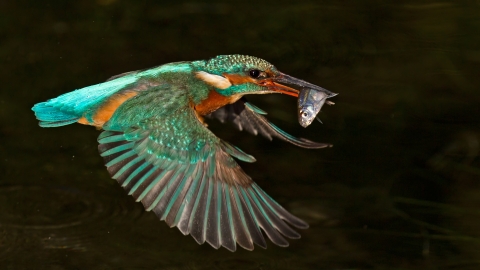
Pied flycatcher, Margaret Holland

Dipper, Andy Rouse 2020VISION

Kingfisher and Malcom Brown

Bluebell, Jim Higham
Hillbridge and Park Wood
Location
Know before you go
Dogs
When to visit
Opening times
Open at all timesBest time to visit
Spring for the bluebells and birdsong - autumn for gorgeous autumn colourAbout the reserve
Despite its modest size, the upland oakwood on this reserve is one of the largest in the area and several species of woodland birds make their homes here - among them are wood warbler and pied flycatcher, which arrive in summer to breed in the woods.
In spring, the woodland floor is carpeted with bluebells. Once a common sight, this purple haze is now sadly becoming much less familiar around Britain. The eastern boundary of the reserve is formed by the River Goyt.
Here, you may see the turquoise flash of a kingfisher darting past, or the distinctive brown and white 'bobbing' of a dipper on a rock in the river. Beside the river, the oak trees give way to alders which bend their branches gracefully over the water.
The reserve is also an important site for lichens and bryophytes (mosses), with several rare species occurring on the older trees.
Habitat
Contact us
Nearby nature reserves
Download our nature reserve leaflets
Play Wild rating
Wildlife may be sensitive at certain times of year.

